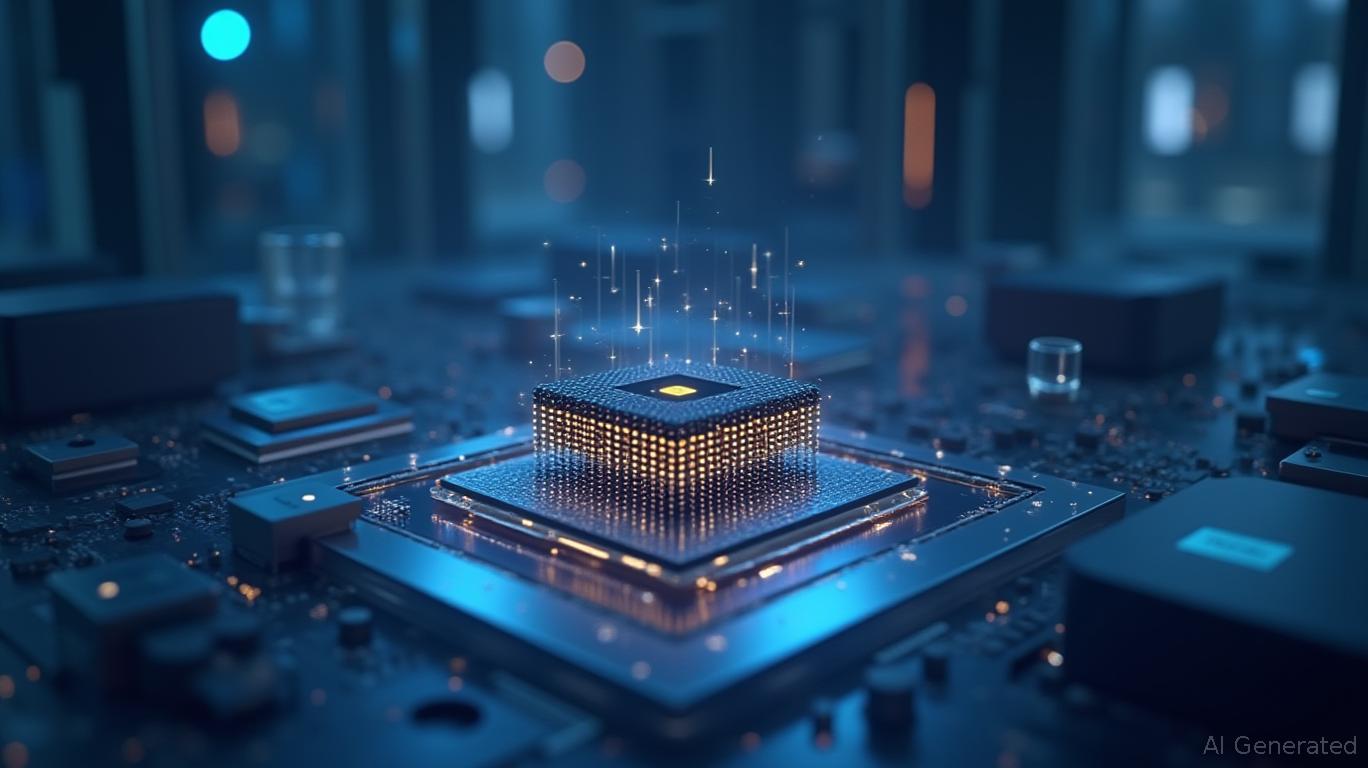SK Hynix's Structural Shift: Dominating the Next Decade of DRAM with 4F² VG and 3D Innovation
The semiconductor industry faces a critical inflection point. As traditional scaling limits impede progress, companies must innovate or risk obsolescence. SK Hynix, a global leader in memory solutions, is not just adapting—it's redefining the future of DRAM with its Next-30-Year Roadmap. By pivoting to 4F² Vertical Gate (VG) technology and 3D DRAM stacking, SK Hynix is positioning itself to dominate markets driven by artificial intelligence (AI), high-performance computing (HPC), and cloud infrastructure. This structural overhaul isn't just about incremental gains; it's a bold play to lock in long-term cost advantages and technical leadership.

The Scaling Crisis and the Need for Structural Innovation
Traditional DRAM architectures, built on the 6F² cell design, are hitting physical limits. Shrinking transistors further requires costly Extreme Ultraviolet (EUV) lithography, which has become a financial burden for chipmakers. SK Hynix's response? A radical redesign. Its 4F² VG platform swaps horizontal transistors for vertical ones, reducing cell area by 30% compared to 6F² designs. This cuts manufacturing costs and improves power efficiency—a critical edge in a world hungry for high-performance, low-power memory.
The 4F² VG technology also minimizes reliance on EUV. By using high-NA EUV tools strategically and optimizing wafer bonding processes, SK Hynix estimates it can slash EUV-related expenses by 50%. This cost discipline is vital as competitors like Samsung and Micron grapple with rising lithography costs. Meanwhile, SK Hynix's 3D DRAM—stacking memory layers vertically—promises even greater scalability. While initial layer-stacking yields remain lower than 2D DRAM, SK Hynix's 56.1% yield for a 5-layer prototype (up from 30% in 2.5D experiments) signals progress.
Why 3D DRAM Is the Long Game
Layer-stacking isn't new, but SK Hynix's approach is uniquely ambitious. The company aims to scale 3D DRAM to 32–192 layers—a leap from today's 5 layers—using innovations like Sideway Source etching (borrowed from its 321-layer NAND success) and Multi-Rank Memory Unit Fabrication (MR-MUF). These technologies reduce defects, simplify alignment, and improve thermal management.
(SK Hynix has consistently invested 8–10% of revenue into R&D, outpacing Micron's 6–7% and Samsung's 6–8%. This underscores its commitment to innovation.)
The payoff? Lower costs per gigabyte and higher densities, essential for AI workloads. A single 3D DRAM chip could replace multiple 2D chips, cutting power consumption and space in data centers.
Capturing Growth in AI and HPC
The AI revolution is memory-intensive. Training large language models consumes vast amounts of DRAM, while edge computing demands low-power, high-speed solutions. SK Hynix's 4F² VG and 3D DRAM are tailor-made for this:
- Performance: Vertical gates enable faster data access, ideal for real-time AI inference.
- Density: 3D stacking reduces server footprint, critical for cloud providers.
- Cost: Lower EUV dependency and higher yields mean SK Hynix can undercut competitors on price.
SK Hynix's 12-layer HBM4, showcased at TSMC's 2025 symposium, already delivers 5.2 Gbps speeds—key for GPU-heavy HPC systems. This gives the company a first-mover advantage in markets like quantum computing and autonomous vehicles.
Risks and the Path to Dominance
No innovation is risk-free. Scaling 3D DRAM to 192 layers requires solving yield and thermal challenges. Competitors like Samsung are also advancing 3D DRAM, and EUV costs could rise unpredictably. Yet SK Hynix's 30-year roadmap—backed by its NAND expertise and partnerships with foundries—suggests it's prepared.
(SK Hynix's stock has outperformed the NASDAQ by 20% over five years, reflecting investor confidence in its technical vision.)
Investment Case: Buy the Future of Memory
SK Hynix isn't just a DRAM supplier—it's a semiconductor architect. By betting on 4F² VG and 3D DRAM, it's securing a moat in a $100B+ market. Key catalysts for investors include:
1. Mass production of 4F² VG DRAM by late 2020s, boosting margins.
2. 3D DRAM adoption in AI servers (expected to grow at 18% CAGR through 2030).
3. Cross-technology synergies with its NAND and packaging (e.g., CoWoS) expertise.
For tech-driven economies, SK Hynix's innovations are a strategic asset. Its shares, trading at 6.2x forward EV/EBITDA, offer a compelling entry point. Risks are mitigated by its R&D prowess and diversified revenue streams.
Conclusion: The Roadmap to Long-Term Dominance
SK Hynix's Next-30-Year Roadmap isn't just about staying competitive—it's about rewriting the rules. By tackling scaling limits with structural ingenuity, the company is primed to capture the $150B+ AI/HPC market. For investors, this is a bet on a future where memory is as vital as compute, and SK Hynix is the architect of that future.
Investment recommendation: SK Hynix's strategic bets on 4F² VG and 3D DRAM, paired with its R&D discipline, make it a top pick for semiconductor investors. Hold for 3–5 years to capitalize on AI-driven demand.

Comments
No comments yet